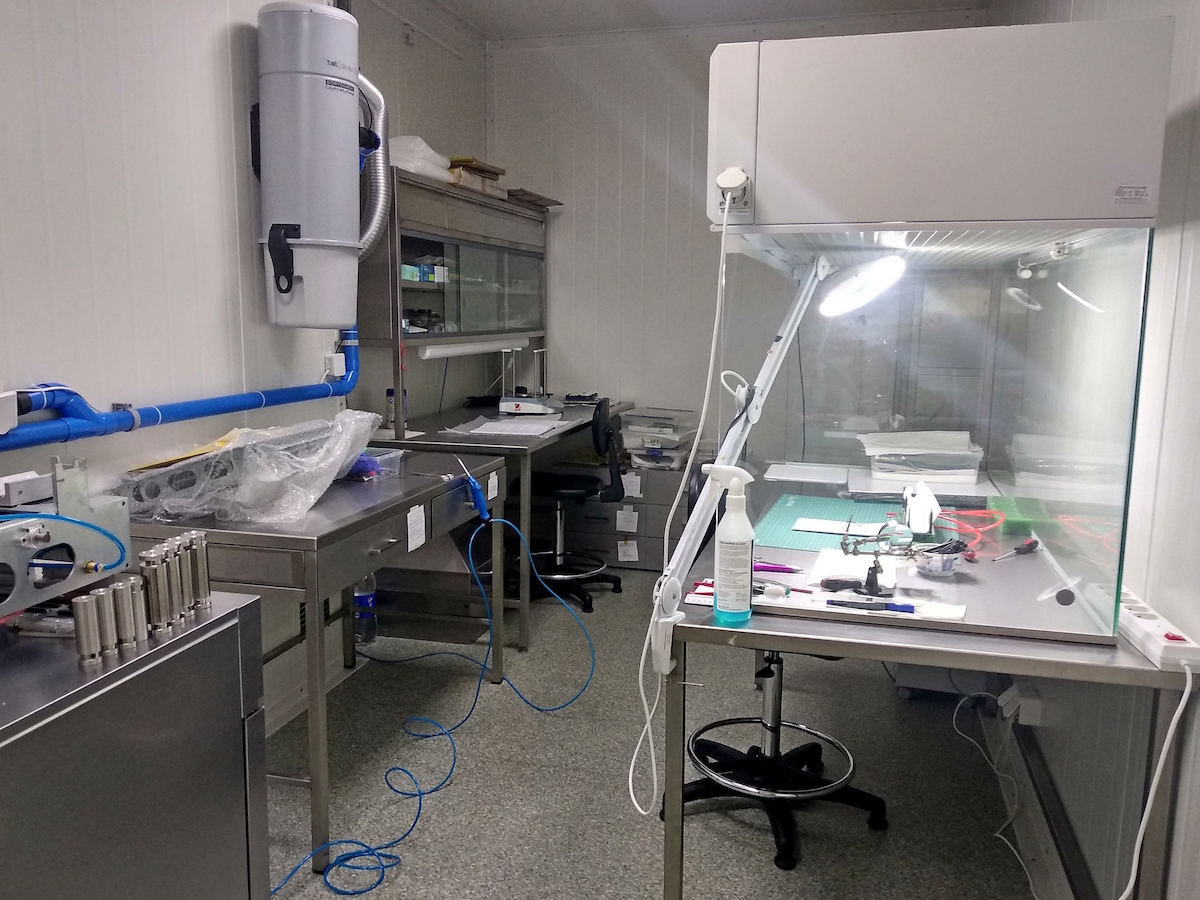Author: IPPLM
In 2014, a new Laboratory (Laboratory of X-ray Diagnostics) was
established at the Institute of Plasma Physics and Laser Microfusion (www.ifpilm.pl)
addressing the needs of plasma fusion for new technologies development.
Its main activity is related to the development of Gas Electron
Multiplier(GEM) based detectors with an ultimate goal of their
application in fusion. The GEM detectors were discovered at CERN and
used for the first time for nuclear physics research (https://gdd.web.cern.ch/).
Considering their unique capabilities, the IPPLM researchers in
collaboration with University of Warsaw and the Warsaw University of
Technology proposed their usage for the fusion plasma measurements. The
main goal is the detection of soft X-ray radiation emitted from plasma
produced in existing or future fusion devices, which delivers
information about various important plasma parameters. The Laboratory is
engaged in detectors design, development and testing of the final
product, being equipped with modern diagnostic tools and necessary
measurement equipment.
The Laboratory conducts development work on
the structure and implementation of GEM detectors. Our main tasks are
the design of the sensor structure, building prototype components,
assembly of the detecting module and their further experimental and
numerical studies towards the purpose of soft X-ray imaging of plasma
structures and monitoring of plasma impurities (such as e.g. tungsten –
material foreseen for the divertor material in ITER).
GEM
technology is relatively new but has been already proven as a robust
one. The “engine” of the detector is a GEM foil, 50 μm thick Kapton
foil, densely perforated, covered on both sides with a thin layer (5 μm)
of copper. This foil becomes an effective amplifying element even in
case a moderately high voltage is applied to its sides, hence reducing
the probability of spontaneous discharges.
For the needs of
research activities conducted within the Laboratory of X-ray
Diagnostics, the IPPLM has been equipped with a modern clean room which
includes professional equipment used exclusively for the preparation of
detector components and their final assembly. In this room, all works
connected with the assembly of detectors are performed. This ranges from
the preparation of frames, gluing the window's foils, conducting all
the intermediate stages of assembly works, up to the assembly of the
final sensor. In addition, there is a fully equipped modern measurement
laboratory where preliminary measurements and studies are conducted
before the final decision is made on the constructed device as well as
the conclusive tests before the detector is finally approved.
The
advantages of the developed detectors allow the IPPLM researchers to
apply them for plasma impurity monitoring at tokamak devices (WEST, JET,
etc.), where the plasma contamination occurs due to the interaction of
the plasma with the surrounding surfaces, i.e. with the materials of the
first wall of the tokamak chamber. As impurities cause plasma energy
losses due to an increase of radiation emission generated by partially
ionised atoms such a task is extremely important for fusion devices.
Therefore, an appropriate diagnostic tool is needed, which would be able
not only to monitor the level of the generated impurities, but also to
reconstruct their spatial distribution.
The IPPLM, together with
the collaborators, contributes to the development of diagnostics on the
WEST and JET tokamaks by the design, construction and installation of
the GEM detectors for plasma monitoring. The detectors are currently
working at the above mentioned two important research centers. The first
diagnostics was built and installed in collaboration with the
University of Warsaw and the Warsaw University of Technology at the JET
tokamak (Culham, UK) in 2014. Another diagnostics aimed at preparation
of the radiation tomography was built in collaboration with the Warsaw
University of Technology. It has been under tests at the WEST device
(Cadarache, France) since 2017. This research is still ongoing on the
last detector, in the frame of soft X-ray tomography diagnostics, to be
installed at the WEST device in the nearest future.
Thanks to the
experience gained over the years in the development of diagnostics based
on the GEM detectors, the IPPLM has become a part of important
scientific programmes performed at JET and WEST tokamaks, ITER-oriented
tokamaks, which means that the IPPLM contributes also to the development
of the scientific programme for ITER.

Clean room. Image: IPPLM